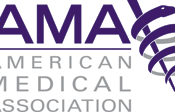Americans rely on the healthcare system for the maintenance and improvement of personal health, which often involves care in the hospital setting. Most patients believe that the American healthcare system provides the highest quality and safest care in the world. It is estimated that four out of every one hundred hospitalized patients in the United States suffers a serious adverse event, such as a nosocomial infection, medication error, or injury related to improper use of equipment or treatment. Because nurses have a generalist education, are present most continuously with patients, they play a key role in the national agenda of error reduction in health care. On a daily basis, nurses monitor and manage the quality of health care delivered in hospitals, outpatient departments, long-term care facilities, and many other settings
In the Institute of Medicine's (IOM) report, To Err is Human: Building a Safer Health System, revealed that medical errors contribute to as many as 98,000 unnecessary patient deaths each year.
The IOM described the nation's health care system as fractured, prone to errors, and detrimental to safe patient care. It defined patient safety as freedom from accidental injury and further stated that ensuring patient safety involves the establishment of operational systems and processes that minimize the likelihood of errors and maximize the likelihood of intercepting them when they occur (IOM, 2000). Since the release of the IOM's report, healthcare organizations and professionals have put forth a substantial effort to understand and change the factors that contribute often to patient injury and death.
Other statistics related to patient safety include: one in five Americans report they or a family member have experienced a medical error of some kind, 10 percent reported that they or a family member had gotten sicker, and about 50 percent of them said the problem...


